The Right Temperature to Wash White Clothes in the Washing Machine
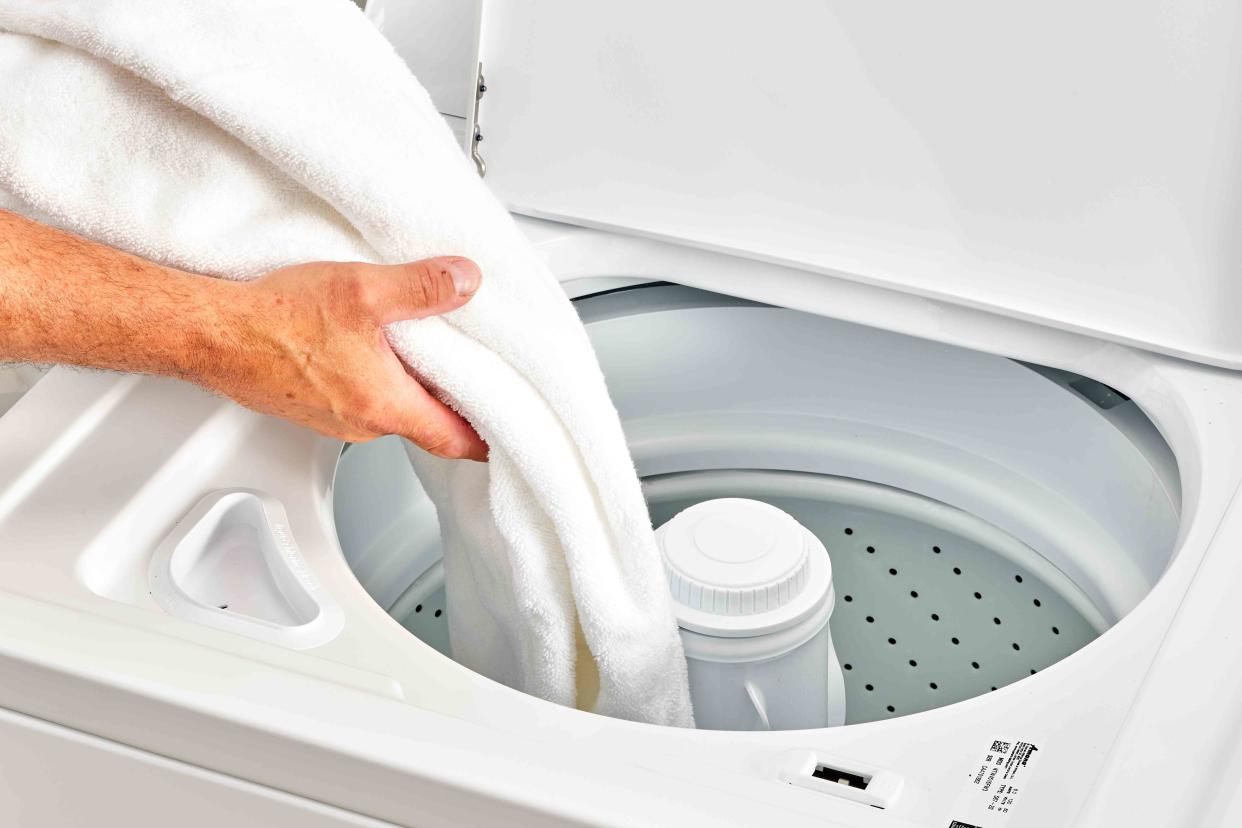
The Spruce / Kevin Norris
Keeping white clothes white can be a challenge, but using the right water temperature in the washer makes a significant difference in your efforts.
For white cotton laundry like diapers, underwear, towels, jeans, and sheets, warm water is always recommended. Wash whites in hot water between 90 and 130°F for the best results.
To keep all types of white laundry bright and clean, follow these methods for cleaning your washable white clothes.
Why Washing Machine Temperatures Matter
Today, we have clothes with easy-care fabrics, better washing machines, and superior laundry detergents that use surfactants and enzymes to lift and remove soil from fabrics in cold water, so many fabrics can be washed in cold.
Using lower washer water temperatures is beneficial because they can save on utility costs and keep colors bright. However, always using cold water can also leave clothes filled with odors, bacteria, and white clothes looking dull and dingy.
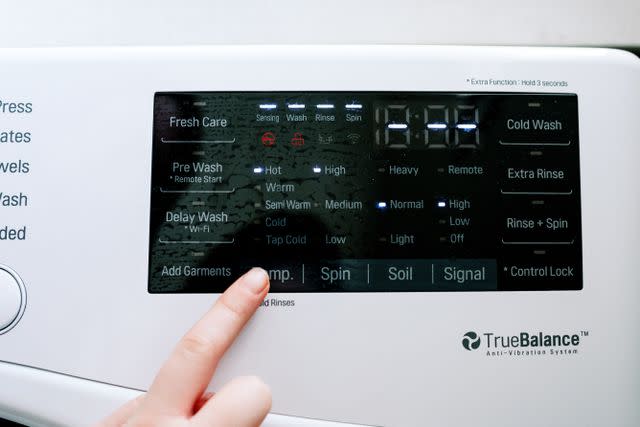
The Spruce / Michele Lee
Why Whites Need Warm Water
Not all white fabrics can tolerate hot water, but all fabrics except the most delicate silks, will benefit from warmer water temperatures. Warm water helps most less-expensive detergents clean washable wool, Lycra, spandex, and polyester more effectively to remove oily residue and soil that causes white fabrics to yellow.
White cotton clothes like underwear or t-shirts that are worn close to the body need hot or warm water to remove body soil and to break down odor molecules.
Using hot water for sheets, kitchen towels, diapers, fabric napkins, and bath towels will kill most bacteria and fungus without the addition of a laundry sanitizer like chlorine bleach.
6 Best Tips for Washing White Clothes
Sort Dirty Laundry Carefully
White clothes should only be washed with other white laundry that is made of the same type of fabric. Separation allows you to use the best water temperature for each fabric and will prevent your whites from taking on dyes from colored fabrics.
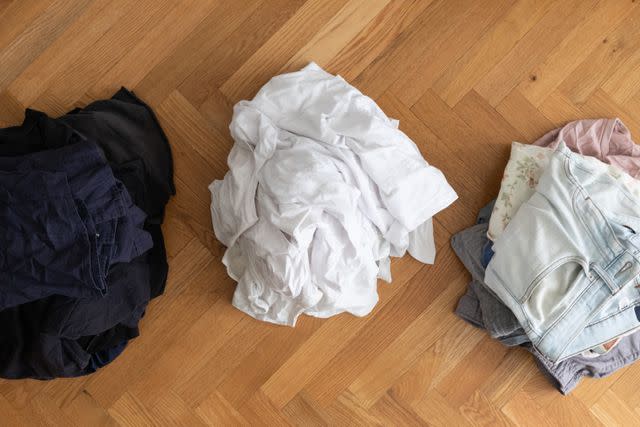
The Spruce / Leticia Almeida
Pretreat Stains
Treating stains as soon as they happen is always the best idea. However, if you don't treat them right away, check each white garment before you toss it in the washer and follow stain removal guidelines for different types of stains.
Most stains will respond to spot treatment with an enzyme-based stain remover applied about 15 minutes before washing. This gives the stain remover time to begin breaking apart the stain molecules so they can be washed away.
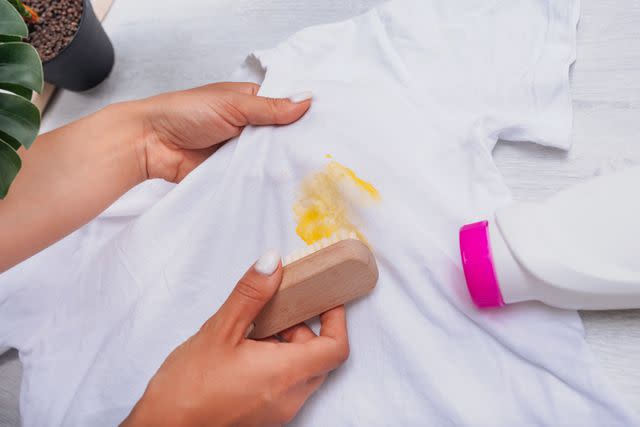
The Spruce / Ulyana Verbytska
Load the Washer Correctly
When you're in a rush or looking to save a little money, stuffing the washer to the brim with clothes is tempting. An overloaded washer won't produce the cleanest or whitest white clothes.
Overloading doesn't allow the water to flush away the grime and it redeposits on the white fabrics leaving them looking dull.
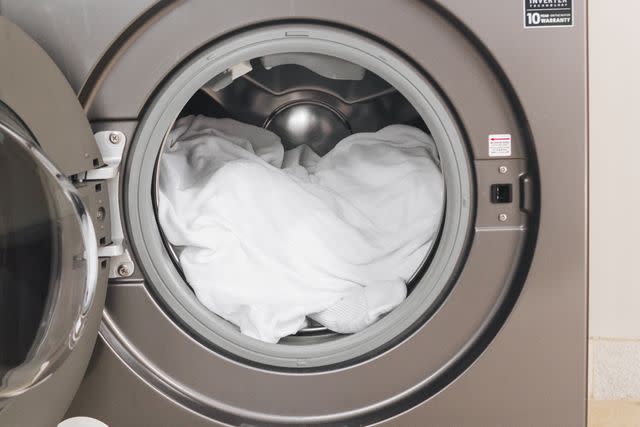
The Spruce / Letícia Almeida
Use an Effective Detergent
For the whitest whites, use a laundry detergent that contains sufficient enzymes to remove stains and soil so that the surfactants in the formula can suspend the dirt in the wash water to be flushed away.
Look for a detergent that contains an optical brightener that tricks the eye by bending ultraviolet light waves to showcase blue light while minimizing the yellow light you see (makes clothes appear whiter).
Tip
Don't use too much detergent, or the residue will redeposit on the fabrics and leave them looking dull.
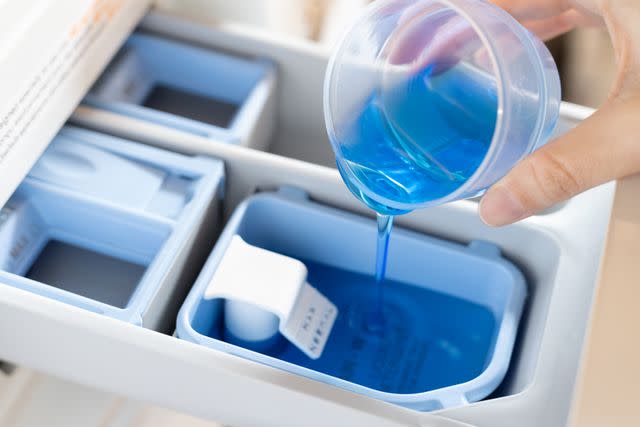
The Spruce / Nelly Cuanalo
Add a Laundry Booster
If your laundry detergent doesn’t give you the white results you want, you can boost the performance by adding one-half cup of borax, one cup of baking soda, or two tablespoons of oxygen-based bleach powder to each load.
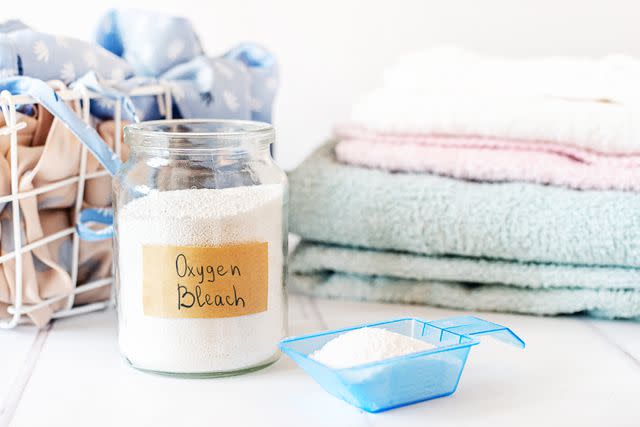
The Spruce / Ulyana Verbytska
Use a Vinegar Rinse
Add one cup of distilled white vinegar to the rinse cycle instead of fabric softener. The mild acid in the vinegar will help strip away any detergent residue that can cause white fabrics to yellow, especially when dried in a dryer at a high temperature.
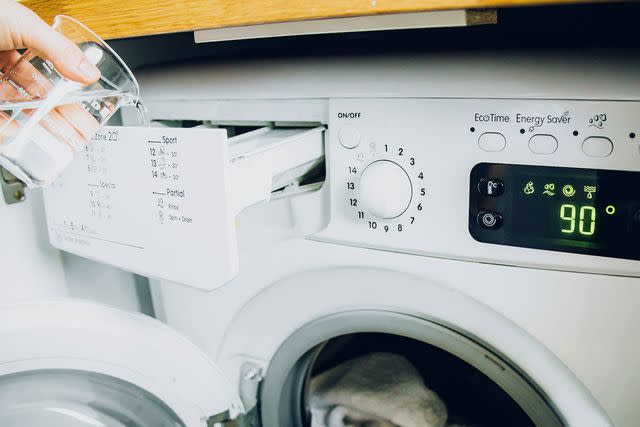
The Spruce / Ana-Maria Stanciu
How to Brighten Dingy White Clothes
To brighten dull or yellowed whites, mix a solution of powdered oxygen bleach and cool water by following package directions. Mix enough to completely cover the clothes or linens. Allow the dingy whites to soak for at least four hours or overnight. Drain the solution and wash as usual. You can repeat this step if needed.
Other options to brighten dingy white clothes are to use a commercial color remover, a laundry whitener, or old-fashioned bluing. Just follow package directions.
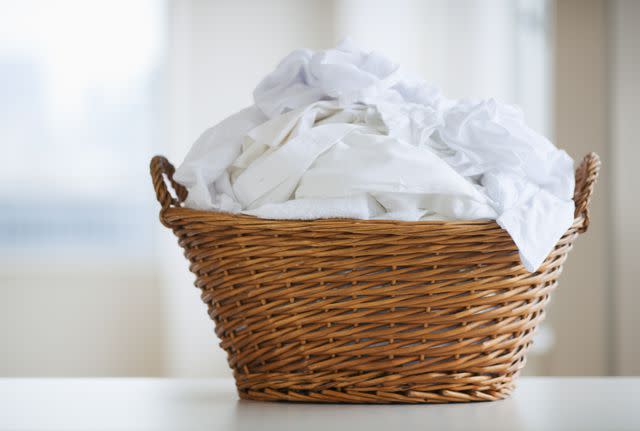
How to Keep White Clothes White and Bright
If using cold water to wash white clothes, use the best quality laundry detergent you can afford and increase the length of the wash cycle.
Whenever possible, hang white clothes outside to dry. The ultraviolet rays of the sun will help whiten the fabric.
When using an automatic dryer, dry white clothes on a lower heat setting and skip the dryer sheets. They can leave a residue on the fabric that can cause yellowing.
While chlorine bleach can whiten white cotton clothes, never pour full-strength chlorine bleach into a washer filled with clothes. Always dilute it first with water or use the washer's bleach dispenser.
Clean your washer regularly so it doesn't leave residue on your white clothes.
Read Next: The Best Washing Machine Temperature for Laundry
Read the original article on The Spruce.

